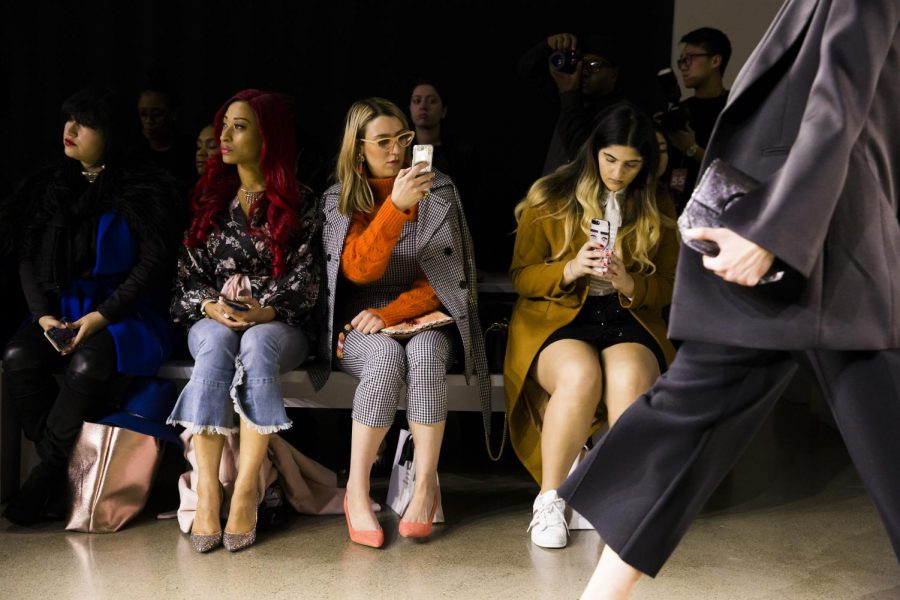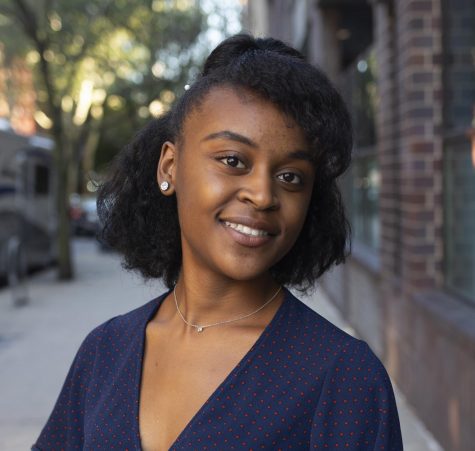NYFW: Fashion-Forward or Fashion-Dead?
(Katie Peurrung)
March 5, 2018
New York Fashion Week has always served as a window into the future of fashion. Carrie Bradshaw, leading lady of “Sex and The City,” once said, “Every year, the women of New York leave the past behind and look forward for the future. This is known as Fashion Week.”
Despite the fact that fashion week in New York City is often considered the pinnacle of sartorial showcases, this past NYFW was unusually quiet. With countless designers either choosing to show in Europe or choosing not to show at all, the Fall/Winter 2018 season marks a turning point in the popularity of NYFW as a whole.
Born in Paris, fashion has always been cyclical and reflective of societal landscapes. Media outlets such as Vogue and Harper’s Bazaar used to study French fashion trends for inspiration, promoting inaccessible foreign styles to the U.S. market in their magazines.
Shifting with time, and of course, geography, fashion didn’t make its official debut in the United States until World War II. Once Paris became involved in the war, fashion professionals could no longer go there to work. In 1943, the U.S finally had the opportunity to become the fashion hub it is today.
Fashion publicist Eleanor Lambert was the first to seize this opportunity. Through work with the New York Dress Institute, Lambert organized a showcase for U.S. designers to introduce their work directly to national and regional media outlets. New York Fashion Week, originally named Press Week by Lambert, took place in Manhattan’s Bryant Park for many years until 2010.
With movies like “The Devil Wears Prada” and “The September Issue,” attending NYFW used to be seen as a once in a lifetime experience, bringing thousands of onlookers to Bryant Park each year. But now, many top U.S. designers are shifting their focus back to European markets such as Milan, London and, of course, Paris — leaving people to wonder if NYFW is dead.
Home to some of fashion’s most luxurious brands, like Chanel, Christian Dior and Louis Vuitton, Paris’ fashion scene remains extremely competitive. Top brands like Tommy Hilfiger, Rebecca Minkoff and Proenza Schouler all skipped out on NYFW this year with many hitting the European scene instead, hosting shows during Paris Fashion Week or Milan Fashion Week.
The decline of NYFW can be in part traced back to the rising influence of social media. The front rows of NYFW shows are now filled with social media influencers and fashion bloggers, sitting in seats where fashion professionals like Anna Wintour and Grace Coddington used to reign supreme.
Additionally, it is not uncommon to see the rows of NYFW shows full of bright, blinding smartphone screens pointed right at the models, instantly feeding the runway experience to everyone on social media. Once unattainable, NYFW shows have now become available to anyone on apps like Snapchat, Periscope and Instagram, decreasing the demand for a seat at NYFW.
Furthermore, putting on a NYFW show can range anywhere from 100,000 to one million dollars, causing many brands to seek more cost-efficient ways of advertising their collections to today’s technology-obsessed consumers. One brand, rag & bone, completely opted out of NYFW and instead released a creative video showcasing their spring 2018 collection.
With fewer big names participating in NYFW, it has become more of a platform for budding designers to showcase their collections. Nina Tiari, an NYU and Parsons alumna, was among the many up-and-coming designers to showcase their collections this year for NYFW.
Despite the shifting direction of fashion, there are a few big designers still contributing to the legacy of NYFW. High fashion designer and Tisch and Parsons alumnus Tom Ford, didn’t skip out on NYFW this year. In his Spring/Summer 2018 NYFW show, Ford debuted an ’80s-chic inspired line of ready-to-wear dresses and pantsuits.
While the future of NYFW may be unsure, the fluctuating levels of popularity that each fashion week receives mirror that of the fickle nature of fashion. It seems that we may have to get used to seeing our favorite shows reflected through our iPhone screens or get used to the idea that NYFW might not be around for much longer.
A version of this article appeared in the Monday, March 5 print edition. Email Tianne Johnson [email protected].

























































































































































